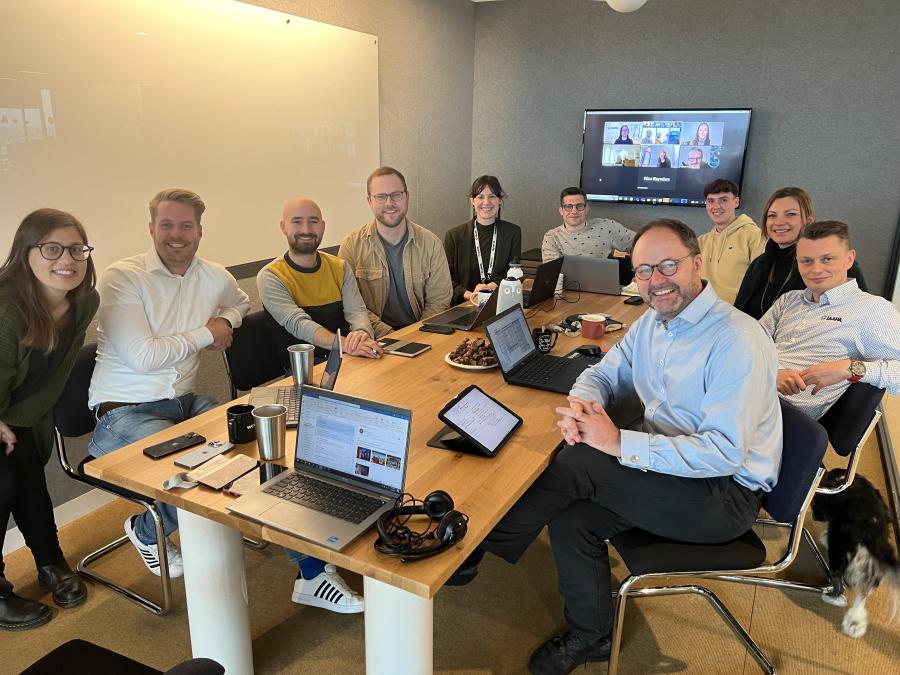Håkon Lund is committed to cultivating knowledge sharing between members, empowering the next generation, and facilitating closer links between national associations as he takes his seat as the new IAAPA EMEA regional advisory committee chair. He aims to help IAAPA EMEA achieve all three objectives to build an even stronger attractions industry.
“IAAPA EMEA stands as a testament to the power of collaboration and expertise. Our association’s strength lies in each member’s unique contributions, and together we are shaping a dynamic future,” says Håkon Lund, an attraction owner and operator in Scandinavia.
Lund is well-known among IAAPA members and across the EMEA region as the owner of Lund Gruppen in Norway. He is the fourth generation to head the family business, which dates back to 1895. Lund Gruppen owns several Scandinavian entertainment brands, including Lunds Tivoli, Kongeparken, Skånes Djurpark, Jul i Vinterland, Palmesus, Ypsilon and Landstreff Stavanger. The group operates three verticals with parks, festivals, and events in Norway and Sweden that welcome more than 3.5 million guests annually.
Lund’s passion for the attractions industry and his drive to create outstanding guest experiences were evident as he met with IAAPA EMEA’s team in Brussels in January. He also connected with members at the IAAPA Middle East Trade Summit in Abu Dhabi, Jan. 22-24.
“IAAPA is all about sharing and creating a strong marketplace for our manufacturers and suppliers,” he explains. “The organization provides a place where members can gather, exchange knowledge and experiences, see the news trends, ask questions, and learn from each other, but also discover the best way to acquiring the next new thing for our guests.”
Lund believes that IAAPA EMEA must continue investing in peer-to-peer sharing, networking, training, and building a strong safety standard. “When attractions are safe and succeed, everyone benefits,” Lund says.
People are at the heart of the attractions industry, and current leaders must pave the way for new generations, according to Lund. He suggests working with nonprofit organizations and higher education institutions can reap benefits.
Lund leads by example, bringing groups of young professionals to IAAPA Connections events, and uses each as a cornerstone for their management leadership training. He wants companies to recruit and actively include young people in everything they do—if they feel they belong, they are more likely to thrive. Lund believes companies who care for their employees will have an engaged, motivated team that contributes to a thriving attractions industry.
“While young generations can gain diplomas elsewhere, IAAPA Institutes can deliver powerful learnings in days,” he says. “To supercharge the team in time that would take months or years in an educational institution.”
IAAPA is expanding its reach as a professional development platform for the next generation of attractions leaders through the IAAPA Foundation. Lund intends to build on that momentum with the association and its members.
Lund also wants to extend that momentum further by exploring IAAPA EMEA’s potential opportunities for synergy with national associations. He sees IAAPA playing a pivotal role as a facilitator, enabling associations to coordinate policies, safety standards, market understanding, and trends going forward. With IAAPA’s help, attractions and suppliers in different parts of the EMEA region can share best practices and successes in areas including safety, sustainability, and innovation.
Participation in IAAPA EMEA’s events, industry research, educational opportunities, and advocacy is crucial, Lund believes. The more IAAPA members contribute their time, energy, and support, the brighter the outlook for those working in the global attractions industry.



